Last week, I clued you in on the fact that APFS is lagging behind its predecessor, HFS+, at least for now. Several readers were curious about how the new file system has been faring under iOS 10.3. Cupertino released APFS to the general public, leading many of us to believe that it’s supposed to be “production-ready.” We’ve benchmarked APFS in iOS, so let’s see what we have discovered.

APFS Lags HFS+ on the iPhone SE
Dave Hamilton ran PerformanceTest Mobile benchmarks on a 2016 iPhone SE that had not yet been upgraded to APFS. Unfortunately, that tool is not 64-bit compatible (and thus won’t work on iOS 11 when it comes out), but there are precious few benchmarking utilities for iOS. Still, it provides interesting results.
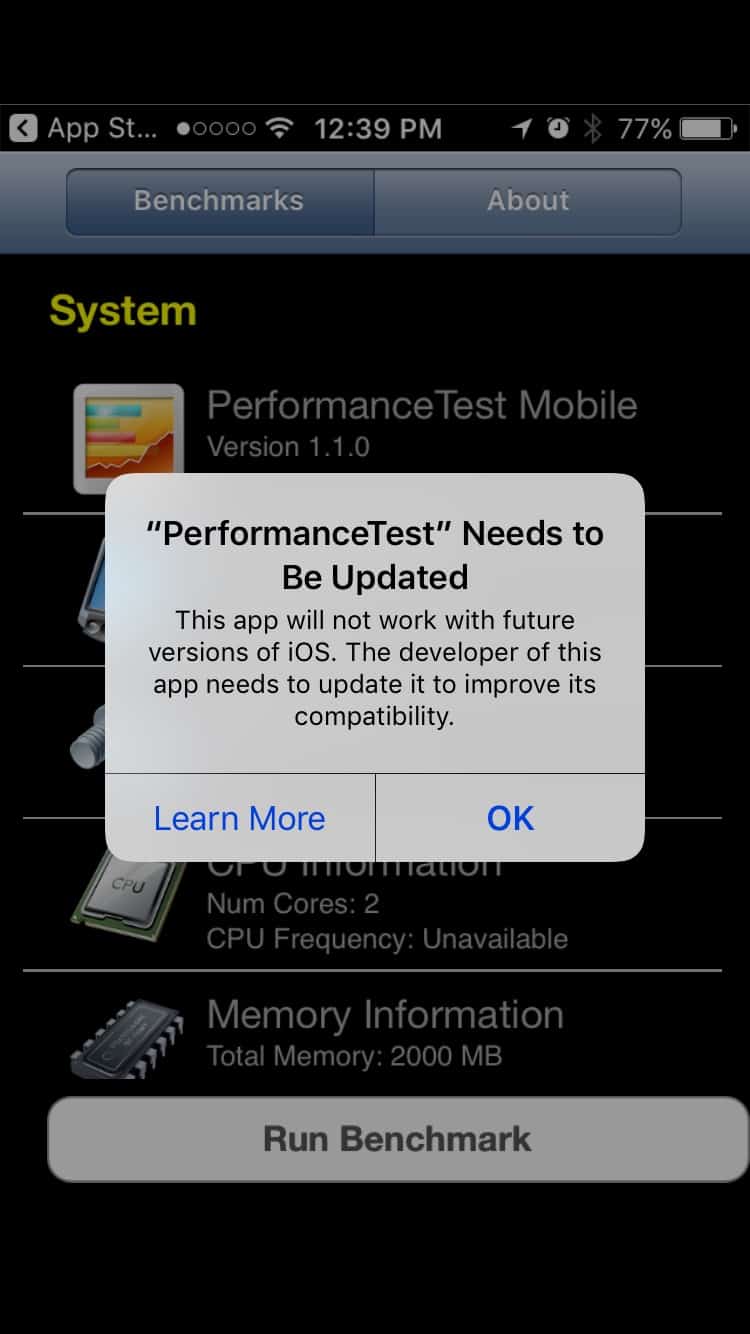
Prior to updating to iOS 10.3.1, Mr. Hamilton was able to record average storage read speeds of 687 MBps. Write speeds came in at 200MBps. He ran multiple tests, and the results were almost the same every time.
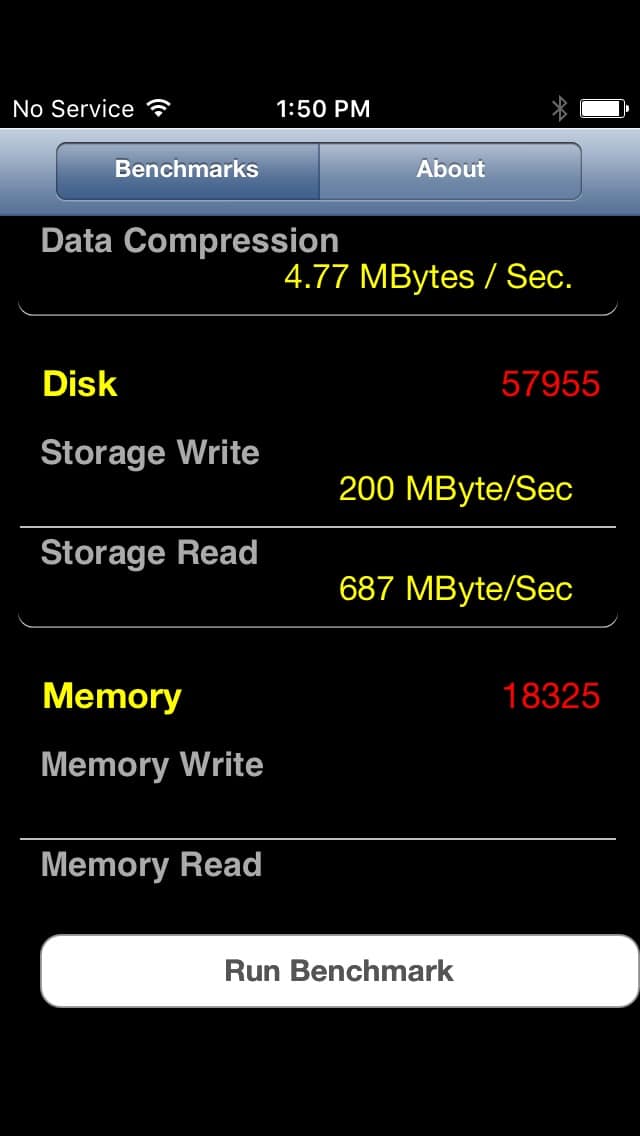
Next, Mr. Hamilton updated his iPhone SE and tested APFS in iOS 10.3.1. He ran the same benchmarking tool. Remember, when you update your iOS device to 10.3 or later, you are also changing your file system to APFS instead of HFS+. With an APFS file system, read speeds were remarkably slower than HFS+. The average storage read speed under APFS was 585MBps. Write speeds averaged on par with HFS+ at 207MBps, sometimes slower.
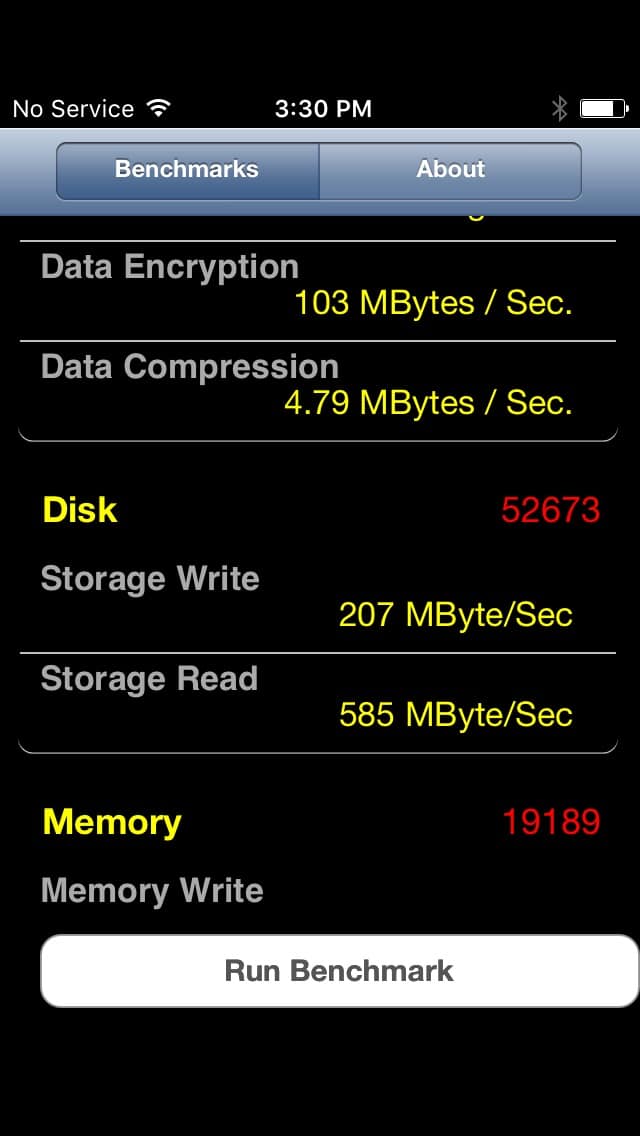
Testing APFS on an “Obsolete” iPhone 5
For my part, I didn’t think to benchmark HFS+ on my iPhone 7 Plus prior to upgrading. I did, however, have an iPhone 5 laying around that hadn’t been updated. So, I decided to run some tests myself. I utilized AnTuTu Benchmark and PerformanceTest Mobile with an HFS+ file system, then with APFS in iOS 10.3.1.
AnTuTu Benchmark doesn’t report its data in speeds, instead assigning a score to each test. Before updating to iOS 10.3.1, my iPhone 5 scored a total of 29,810 points according to AnTuTu’s testing. The UX Data process score was 1692, and the input/output performance was rated at 1382.
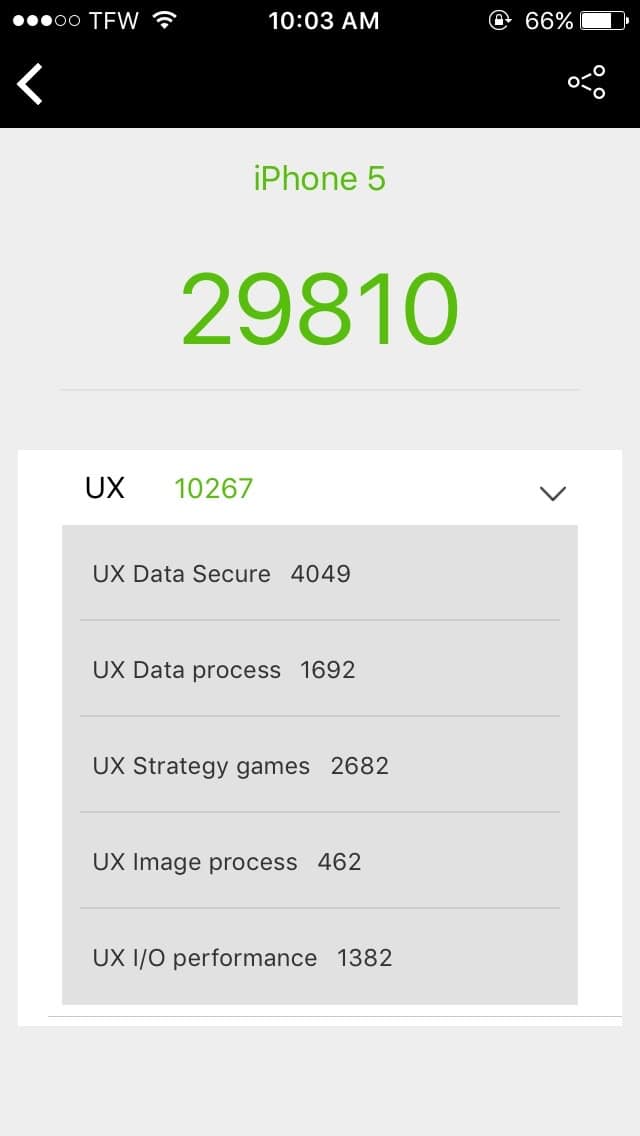
After upgrading to iOS 10.3.1, the score actually dropped by almost a thousand points, to 28,861. UX Data processing scored at 1443, less than with HFS+. Results for UX input/output testing were similar, dropping to 1219.
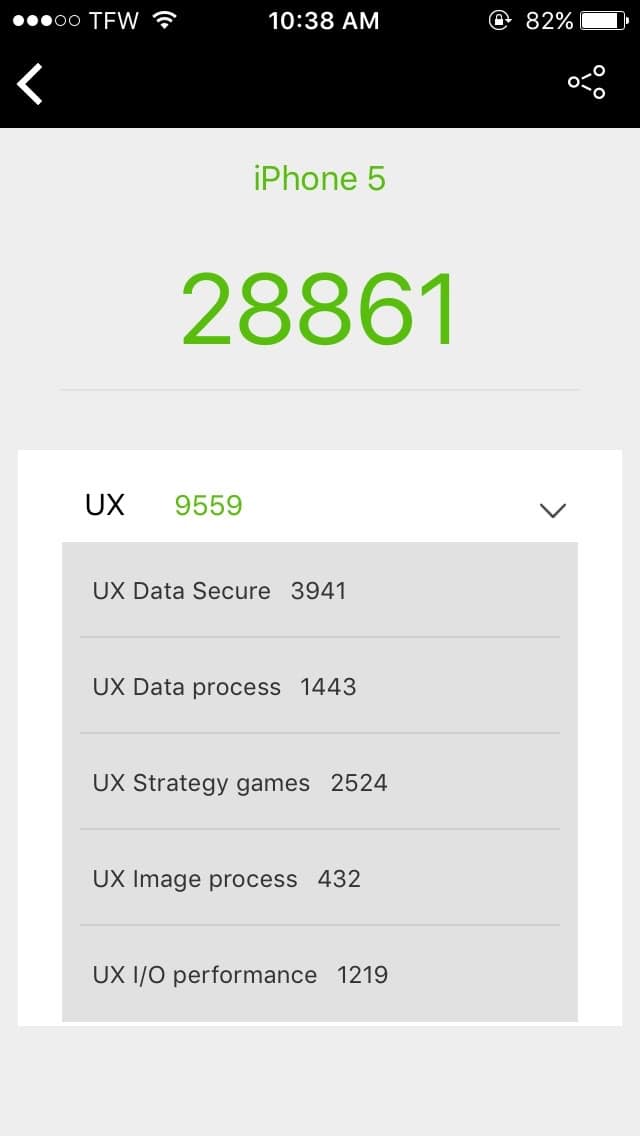
I also benchmarked the iPhone 5 using PerformanceTest Mobile. Prior to updating the device to 10.3.1, I saw read rates averaging 73.1MBps and write speeds of 26.9MBps. Man, is the iPhone 5 slower than the SE!
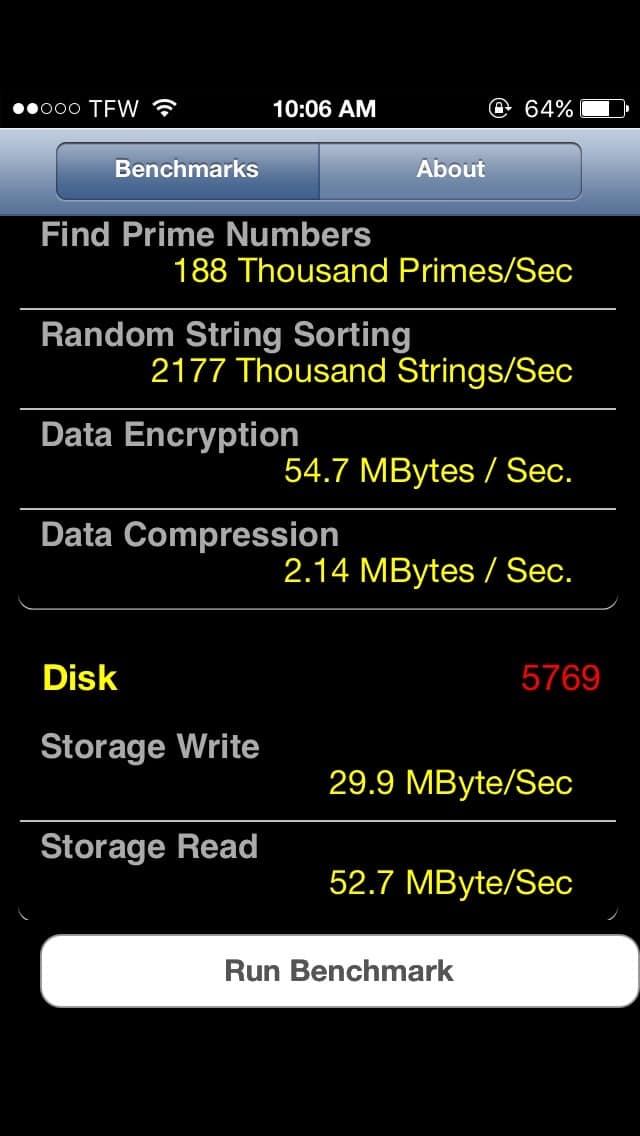
After updating to 10.3.1, the results were mixed. The device’s read speeds clocked in at just 52.7MBps, slower than with HFS+. Write speeds, however, were slightly better–29.9MBps. Again, I ran multiple tests, and the write speeds were consistently faster on APFS, but not by much.
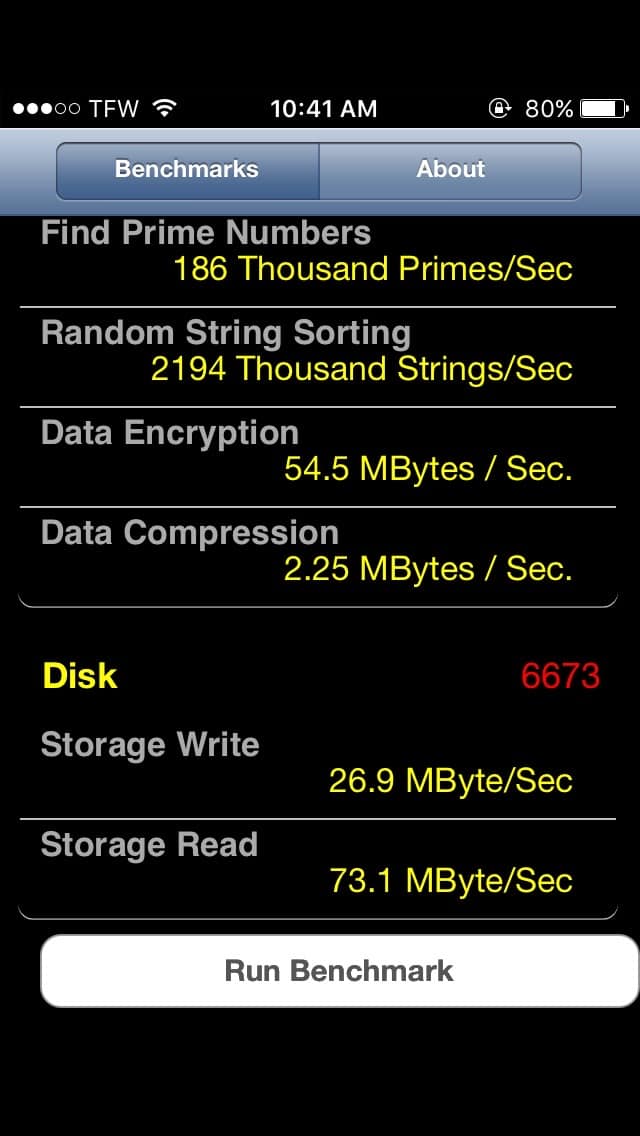
My Thoughts on APFS in iOS?
Despite the thoughts that the version of APFS in iOS 10.3.1 is supposedly ready for production, I suspect it’s an example of a “just good enough” product. Apple might have rushed the file system out the door too soon, not thinking (or caring) that anybody would put the successor to HFS+ to the amount of analysis that we have. Silly on their part, but there you have it. Even so, the differences aren’t stark. The average user probably doesn’t even notice any difference.

APFS only works on 64-bit devices so the iPhone 5 is not converted when you updated to iOS 10.3 so the slowdown has nothing to do with APFS in that case.
Honestly the whole last statement on “My Thoughts on APFS in iOS?” just makes me think you want to complain when there isn’t anything to complain about. Apple is Making headway where no other company has in years. They want to release the new code slowly and see how things run now thats its open to the public. I’m sure in a few months or at the latest when the next iOS version comes out someone at Mac Observer will be writing about how much better APFS is.
I know screen shots make it easier for you to get an article out, but how about a table instead of having us scroll back and forth? In this ADD world, and Dave should understand about being ADD :-), a table would have been better!!
Have you ever “rolled out a new filesystem”?
Anyone who has done filesystem development knows what a BFD this is. It’s such a fundamental component… and they are rolling it out to… how many ? Tens of Millions of devices, different processors, memory configurations, huge numbers of apps of varying quality levels. I can guarantee that this version of the FS code is packed with diagnostics and extra levels of paranoia for this first exposure to the world (beta is important, but the first full release is a different animal).
It has been so uneventful, I am seriously impressed. Once the stability is assured and there are some miles on the clock, the performance will be improved with tuning… but first release ? stability all the way, and as long as it performs well enough, that’s all it takes.
The APFS acronym is not something that TMO came up with. It’s the official acronym for the new Apple File System. Apple File System is abbreviated to APFS, rather than AFS, because there is already another file system that goes by AFS.
Please, never assume that all of your readers know what your initials “APFS” stands for. I’m not naive, having been on a mac since just a few very short years after their ground-breaking “1984” television ad. I was even responsible for the Macs at my publishing company after I proved my knowledge after years of use. I had to look up “APFS” on Google to know that it was “Apple File System.” And even then it would more appropriately be abbreviated “AFS.” So, in the midst of thousands of abbreviations for things within all of the ever-changing technologies, even for us long-time users, at least give what it stands for in the first paragraph or two.
Is it possible the iOS OS is “migrating” the data stored in an iDevice in the background ?
What about trying the benchmark testing after a day or three and seeing if there’s any improvement ?